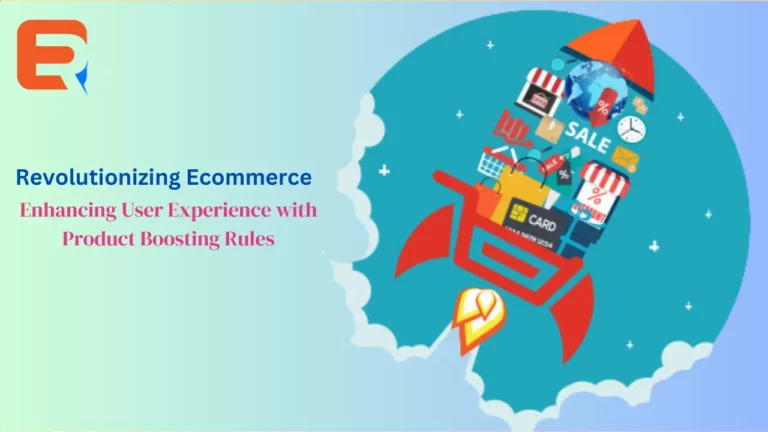E-commerce websites aim to provide seamless and effortless shopping experiences to customers. However, with thousands of products listed on categories and search pages, it becomes challenging for visitors to navigate and find relevant products easily. Traditional methods of manual product sorting and merchandising are time-consuming and error-prone. This is where Product Boosting Rules come into play by offering a smarter and more efficient approach.
Defining Boost Rules
Product boosting rules allow retailers to establish criteria that automatically reorder products according to specified parameters. Rather than dragging each qualifying item individually, rules examine products’ inherent traits to assemble well-curated listings. Rules incorporate fields like colour, price, ratings, and sales to showcase top-performing or editorially-featured products prominently.
To establish rules, merchants select a campaign in their visual merchandising interface. They choose a qualifying field, such as colour, then pick a boosting type—whether an attribute matches, does not match, or sorts a value. For numeric fields, options include matching values above or below thresholds. Merchants also select the value or range to boost.
Rules stack, with subsequent groupings sub-sorting listings. For instance, one could boost red items to the top, then within that set, arrange them from highest to lowest sold units. This prioritizes both relevant colour and best-sellers together. Merchants can combine up to 20 multilevel rules seamlessly.
Experiencing Boosted Products
When rules take effect, products dynamically reorder in real-time as their data changes. Merchants witness alterations directly through campaign views. Customers browsing categories benefit from optimized curations focused on their needs.
Each product also indicates which boosts influenced its placement through descriptive dots next to field values. Rules offer control far surpassing manual adjustments. Instead of tediously dragging thousands of seasonal products individually, a merchant establishes a single criterion for boosting winter apparel. As items are added, removed or go on sale throughout the season, their positions autonomously update according to this direction. Complex and nuanced rules replace repetitive manual work.
Leveraging Global and Custom Boosts
Retailers have the option to configure global boosts affecting all storefronts or target specific campaigns. Global settings yield consistent prominence for top sellers or new releases sitewide. Meanwhile, custom boosts cater listings on individual category pages to related themes.
For instance, a home goods store may establish global product placement, prioritizing price descending, then colour, based on typical shopping patterns. However, its living room furniture section receives a custom boost highlighting in-stock items first to ensure availability. Simultaneously spotlighting best values while addressing a local need, such nuanced tuning streamlines paths to purchase.
By automating merchandising tasks through flexible yet robust boosting rule sets, retailers minimize manual errors and maintenance. Customers enjoy optimized, interest-based browsing tailored to each context, cultivating engagement and encouraging discovery. Overall, these capabilities simplify operations while elevating online shopping experiences for all.
Benefits of Automated Product Boosting
Compared to manual individual handling of thousands of SKUs, rules-based boosting provides various advantages:
- It reduces repetitious tasks and minimizes the chance of human errors. As product data changes frequently, rules ensure correct and real-time reordering.
- Complex merchandising strategies involving multiple variables can be implemented effortlessly through rule stacking and nesting.
- New filters, attributes or seasonal collections can be promoted globally with minimal effort by creating relevant boosting rules.
- Detailed rules free up the merchandising team’s time that can then be dedicated to other strategic activities like assortment planning.
- Rules work dynamically in the background based on live product feeds. This eliminates delays caused by waiting for manual interventions.
- A/B tests can be performed easily by creating parallel campaigns with minor rule changes to find the best-performing strategies.
- Centralized rule-setting allows for maintaining consistency across all targeted catalogues, search pages and other surfaces.
Expertrec: Powering Intuitive Search and Discovery
Expertrec provides retailers with a fully customizable search solution designed to enhance customers’ pathways of exploration and purchase. Its market-leading AI understanding powers fast, relevant results across desktop and mobile. Merchants can leverage Expertrec boosting rules and visual merchandising directly within the search interface to promote top products and collections in an intuitive, engaging format. Overall, Expertrec equips e-commerce brands with the tools to autonomously optimize audiences’ journeys based on their evolving needs. By establishing the right prompts and cues through configurable search experiences, merchants maximize conversions and foster long-term relationships with their customer base.
Conclusion
Product-boosting rules revolutionize how retailers allocate inventory both manually and programmatically. They streamline operations while placing curated assortments in customers’ paths catered to interests. When coupled with Expertrec’s fully customizable search solution, merchants achieve a holistic understanding of shoppers to continuously enhance experiences across all touchpoints.




